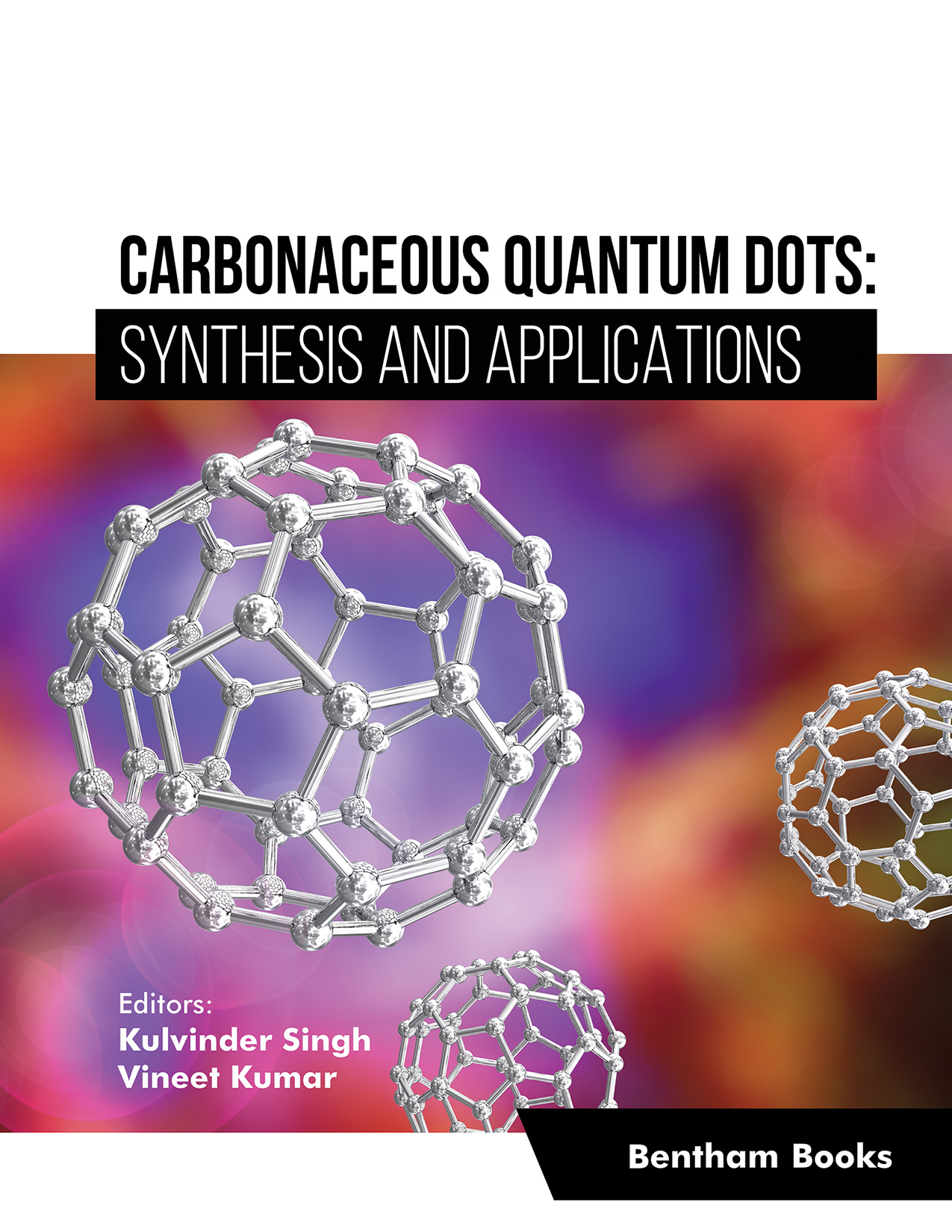Carbonaceous quantum dots (CQDs) are an intriguing category of carbon nanoparticles with diameters of about 10 nm. Several sustainable and green characteristics of CQDs, such as low toxicity, chemical inertness, superior biocompatibility, photo-induced electron transfer, and extremely controllable photoluminescence behavior, render them to be an appealing candidate in numerous potent fields. The production of CQDs offers the benefits of basic, inexpensive synthesis processes as well as a large selection of synthetic raw materials. CQD synthesis techniques can be broadly divided into "top-down" and "bottom-up" approaches. In the former, carbonaceous materials are reduced or subdivided using chemical, electrochemical, or physical methods. The latter is accomplished either by step-by-step chemical fusion of small aromatic molecules or by pyrolysis or carbonization of small organic molecules. The worldwide significance and attention of CQDs are attributed to their unique advantages in terms of properties, such as low toxicity, chemical stability, biocompatibility, redox properties, excellent luminescence, tunable and comparable photoluminescence, fluorescent sensing, excellent solubility, and effortless environmental friendly synthesis process. In this book, the selected chapters intend to illustrate the significant potential of CQDs in numerous sectors, such as biomedical, solar cell, sensing, water treatment, and energy storage/generation, with an emphasis on prospects. This book provides a comprehensive guide for researchers and students to understand the overview, properties, synthesis route and applications of carbonaceous quantum dots. This could be a handbook for various professionals, researchers and students working in the field of biomedical application, green energy, sensing, energy storage, water treatment,
etc. Most importantly, this book has proven helpful to postgraduate students in their academic studies. The authors of this book's chapters are renowned professionals who are enthusiastic about the rapidly emerging, cross-disciplinary fields of research, particularly material science.
We express our gratitude to all the contributors. We would like to thank Prof. (Dr) Andreas Constantinou for writing the foreword. Finally, it is a profound pleasure to thank Bentham Science for taking up the publication of this book. We hope that this book will provide recent scientific knowledge on the chemotherapeutic potential of natural products and the techniques employed for the detection of cancer and other diseases and will lead to new discussions about the global scope of nutraceuticals.
Abhinay Thakur
et al., in Chapter 1, discusses the basic introduction of CQDs with a round note on its potent utilization in several fields; DevikaVashisht
et al., in Chapter 2, elaborate on the properties of CQDs, including phosphorescence, chemiluminescence, adsorption, electrical properties, electrochemical luminescence, photo-induced electron transfer,
etc.; Munish Kumar in Chapter 3 discusses arc discharge method, laser ablation method, acidic oxidation method and combustion/thermal method; Abhinay Thakur
et al. in Chapter 4 mentioned about the characterization techniques of CQDs, including fluorescence spectroscopy, Fourier transform infrared spectroscopy, transmission electron microscopy, atomic force microscopy, optical analysis using photoluminescence spectrophotometer, light absorption by UV-vis spectrophotometer,
etc.; Yarima S. García
et al., in Chapter 5, discusses the potential of CQDs in the biomedical field; Ekta Sharma and Vaishali Thakur, in Chapter 6, elaborated on the significance of CQDs in the solar cell; Alma Mejri
et al., in Chapter 7, enlighten the potential of CQDs in sensing, Garima Kumari
et al., in Chapter 8, mentioned about the capability of CQDs in wastewater treatment, Vaishali Thakur and Ekta Sharma, in Chapter 9, analyzed the potential of CQDs in energy storage; in last, DevikaVashisht
et al., in Chapter 10, deeply enlighten the future aspects of CQDs in various fields.
I anticipate that the readers will find these insights and examination crucial and will inspire them to explore more about further research on Carbonaceous quantum dots in several other potent domains. I am grateful for the prompt initiatives and support provided by the editorial personnel, especially Ms. Humaira Hashmi and Ms. Rabia Maqsood at Bentham Science Publishers.
Kulvinder Singh
Department of Chemistry
DAV College
Chandigarh
India
&
Vineet Kumar
School of Bioengineering and Biosciences
Lovely Professional University
Jalandhar, Punjab
India

